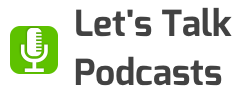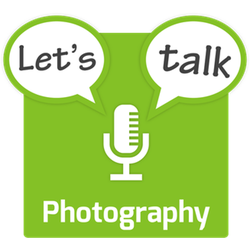Panel
- Bart Busschots (host) – @bbusschots – Flickr
In this solo show Bart shares his thoughts on truth in photography, and why all the current hand-wringing about modern AI developments bringing some kind of truth-pocalypse doesn’t make sense to him. Not only does modern technology not change any fundamental truths about trust, it even has the potential to empower us to more confidently judge the trustworthiness of the images we encounter online.
While this podcast is free for you to enjoy, it’s not free for Bart to create. Please consider supporting the show by becoming a patron on Patreon.
Reminder – you can submit questions for future Q & A shows at http://lets-talk.ie/photoq
There’s been a lot of digital ink spilled recently on how modern advances in photography are some kind of imminent catastrophe — we won’t know what to believe anymore!
Earlier in the year it was the kerfuffle over Samsung using AI to detect the Moon in your photos, and then magically bringing out the detail. Now, it’s the camera app on the new Pixel phones from Google adding some nice AI-powered editing tools, democratising them even more than they already were.
I ignored the Samsung kerfuffle because the crux there was apparent false marketing — that’s not relevant to the art or craft of photography! The response to Google making powerful editing tools easily available is different — Google are not doing anything deceptive, they’re just giving regular folks access to powerful image editing tools that they can they use as they see fit.
The fear is that making smart object removal etc. more easily available means we’ve moved from a world where we could trust the truth of photos to one where we can’t. This line of reasoning is based on the idea that the technology of photography was the source of our existing trust, so now that trust has be destroyed. Does that actually make any sense?
Let’s not bury the lead — no, it does not! It’s doubly flawed, resting on two assumptions that were never true. Photographic technology was never a guarantor of truth, and our anchors of trust have never been the images themselves.
I was inspired to share my own thoughts on this whole concept of the democratisation of AI being some kind of trust-pocalypse by this insightful blog post by Nick Heer: Fake It ’Til You Fake It.
Photographs have Always Been Un-truthful
For a change to result in the loss of something, that something must once have existed. If we want to believe that we are now losing trust in photos then there must have been a time before all the bad stuff started when photography was pure, when all photos were truthful. That was certainly an idea that was present enough in the zeitgeist to give us the cliché that ‘the camera never lies’.
We know that for artistic reasons images have been manipulated almost from the start. Photography was invented in 1839, and by the 1850s we had artists like Oscar Gustave Rejlander expertly creating photographic art that was unapologetically ‘untrue’. Take for example his 1857 allegory ’The Two Ways of Life’, an expansive entirely fictitious photographic scene created by stitching together many separate photos. This is not truth in the literal sense, it’s art intended to reveal a deeper truth — it’s an allegorical painting painted with a camera and a darkroom. Rejlander presented his photographic works as art, so it was honestly dishonest. That tradition never went away, even before the dawn of Photoshop you had the amazing work of photographers like Jerry Uelsmann, and that continues today with modern surrealist photographers like Erik Johansson.
But what about journalistic images, surely there was a time when you could believe the photos taken in the field by photojournalists who were there as history unfolded? I really don’t think so!
The first major war of the photographic age was the American civil war, and as you might expect, it produced a flock of photojournalists. Did they use their photographs to tell a newly un-varnished truth, or did they abuse the perception of photography as being ‘truthful’ to add their own take? I’m sure there was honest and truthful photojournalism, but there was also out-right propaganda — photography abused to add credibility to spin! Taking just one example, we now know Alexander Gardner used two photos of the same group of dead soldiers to tell two opposite stories — first, they were dishonourable Confederate soldiers reaping their just rewards, then, photographed from the opposite side, they were noble Union men who fought bravely for their just and righteous cause. We’ve also now realised that Gardner created some of his scenes by moving the bodies of dead soldiers around, charming!
Only slightly less macabre is the use of doctored images by Victorians to ’prove’ the existence of spirits and ghosts and the like. More playfully there’s the famous case of the Cottingley Fairies, a whole series of faked photos that fooled even Sherlock Holmes author Sir Arthur Conan Doyle in the nineteen teens.
And of course, perhaps the most infamous photographic lies are Stalin’s habit of having former party faithful removed from historic images when they fell out of favour and were made to disappear.
But really, photos have been used to tell big and small lies for about as long as photography has existed.
The argument that it was somehow different before because this kind of thing was difficult to do never held any water for me — the fairy fakes were made by Edwardian kids trying to stick it to their parents for goodness sake!
It’s always been easy for anyone motivated to do so to lie with photographs. Sometimes the lies were created in the physical world and then captured by the camera, sometimes the lies were created by how the images were presented, and sometimes they were created in the darkroom, but the camera has absolutely always lied!
A picture is indeed worth a thousand words, but those words could equally well be truth, fiction, or lies!
Trust was Never About the Tech
If you think about it, before photography was invented, how did people communicate? They wrote things down, and they drew and painted things. There have always been trusted sources of truth, and yet, no quill ever prevented an author from writing lies, no canvas ever rejected untruthful paint, and no printing press ever refused to print total and utter fabrications!
We had trust before we had any technology wrongly assumed be come to be somehow inherently truthful, so how did that work?
It’s shocking simple — trust has always based on who is sharing the information, not on how it is being shared. Assuming that photos don’t lie was only ever a naïve fantasy believed by the gullible. Now with advances in computational photography and generative AI that eternal truth is becoming more difficult to ignore, but it always was true, and it always will be!
Trust must be earned, and provenance must be verified — do I trust the purported source, and am I sure the information is authentically from that source?
Technology Could Help Build Trust in Images
The biggest irony to me in all this worry about the democratisation of image editing is that our emerging technologies actually have the power to bolster trust rather than undermine it!
Companies like Microsoft and Adobe are working on technologies to use cryptographic tools to attach provable provenance to photos, and they’re not alone. We’re making good progress towards a future where you will be able to tell your browser which organisations you consider trustworthy, and your browser will then be able to cryptographically verify the authenticity of any image genuinely published by those sources.
The process will start with the cameras themselves — photo journalists will be issued with cameras that contain embedded read-only cryptographic keys (the same tech that secures the face and fingerprint readers on our phones) which can be authenticated with the organisation’s public key, and which digitally sign the photos the instant the shutter fires. This will cryptographically tie photos to a specific camera in a specific place at a specific time. At each point between the shutter firing and the image appearing on the web, all edits will be made using verified tools that cryptographically sign and date each edit creating a chain if trust all the way from the camera to your browser or social media client. You’ll be able to verify the image’s full provenance, and if at any time the photo leaves the verified toolchain, the digital signatures will fail to validate, so your browser or social media client can flag the image as faked.
The key point is that regardless of how widely the image is spread around social media, its digital signature will move with it, allowing each viewer on each platform to know the image’s full history. This will not tell you whether or not to trust the image’s creator, but it will allow you to know who created the image, and it’s then up to you to judge it in that light.
Bottom line — you should never have blindly trusted images shared without context, and you definitely shouldn’t now, but in the future, it might actually get easier to make informed judgements about images.

